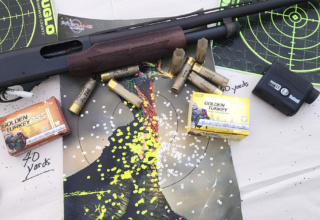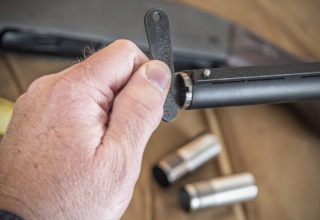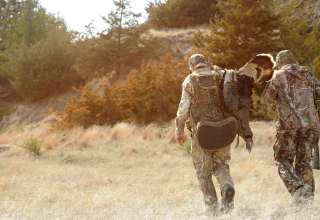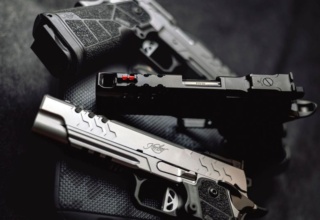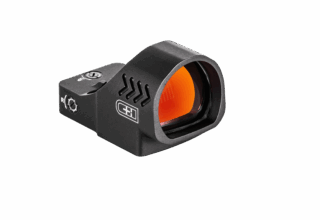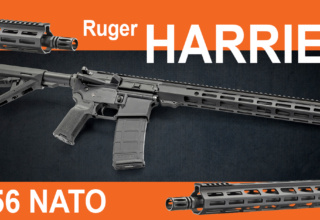Taking the time to pattern your shotgun and turkey load could mean the difference between tagging out or eating tag soup.
By Elle Lawrence
The gobbler you’ve been working all morning has finally given in and come to your calls. His red head slowly turns white as he sees your hen decoy and puffs out his chest. His fan goes up, and his feathers glisten in the morning sun as he struts his way towards you.
BAM! You squeeze off a round at what you feel is a for-sure shot at the Tom. Instead, the longbeard jumps at the noise and the gust of wind that just ruffled his feathers. He sees your movement and before you know what’s happened, he’s long gone.
You question your every move, replaying the last few seconds in your head. But the answer is simple…you didn’t pattern your shotgun to your turkey load and you just clean missed.
What is Patterning?
In today’s hunting world, no two shotguns are alike, and no two turkey loads are alike. Just because your turkey gun fires Federal #5s perfectly doesn’t mean it will do the same with Remington loads.
Patterning your shotgun to your shells is the simple act of seeing where your shot is hitting on a target and how the load performs at different distances. This will help to determine if the load you have chosen is ideal for your setup as well as your ethical shooting distance on a gobbler.
Understanding Turkey Loads
Shotshells made specifically for turkey hunting are not your average bird shot. They pack a serious punch and that’s because it takes a lot of power to bring down a turkey (2 foot-pounds of energy).
Turkey loads are generally filled with #4, #5, and #6 shot size, and range in gauge from 12 to 20 to (now) the popular .410. Loads made specifically for turkey hunting are engineered to hold consistent patterns downrange, keeping your shot string as tight as possible at varying distances. To do this, shot is manufactured using a number of components including lead, copper, nickel, tungsten, and more.

Lead is a heavy metal that carries more mass and energy downrange, but with today’s technology, ammunition manufacturers have developed their own recipes to go head to head with lead. For example, TSS, or tungsten super shot, is making waves in the hunting realm and sending turkey hunters into a frenzy. TSS is denser and harder than lead, allowing it to fly further. It also means that shot size can now be upped to #7s and #9s…meaning you’re getting more pellets in a shell and they fly farther.
Opinions vary on whether it is more important to have more energy downrange to kill a turkey or more pellets in the vital zone. For example, #4 shot is larger than #6, meaning a shell can hold less #4s than #6; however, #4 shot is known to penetrate deeper but have less hits on target, while #6 shot has more hits on target but doesn’t penetrate quite as deeply.
It’s all a science and could be argued for days. The bottom line is this: you need to pattern your shotgun with different turkey loads to see which works best in your gun.
Turkey Choke Tubes
Choke tubes come in different sizes to determine how tight or spaced out the pellets from your shotgun load leave the end of your barrel. Although your shotgun may come with a selection of choke tubes, aftermarket chokes made specifically for turkey hunting are ideal. Three common chokes tubes for hunting turkey include Modified, Full, and Super Full.
A Modified tube is most effective at 30 yards, a Full tube at 40 yards, and a Super Full is most effective out to 50 yards. Of course, this is all dependent on the load you choose, gauge, and shot size, but those distances are a general rule of thumb.
However, it’s important to check with the manufacturer on what type of choke you should be using with the turkey load you have chosen. With today’s advancements in turkey loads, it’s not just the shot that has been updated. Wads have been given innovative designs and some manufacturers have made specialty wads to essentially do the same job as choke tubes. Instead of pairing a tight wad with a tight choke, some manufacturers recommend utilizing an improved cylinder or modified choke with your load.
How to Pattern Your Shotgun
To make sure you are as accurate as possible, pattern your shotgun using a stable shooting bench and, to save your shoulder, use a rest such as the MTM Shoulder Gard Rifle Rest.

If you’re mounting a red dot scope to your shotgun, which I highly recommend for increased accuracy, don’t waste expensive turkey loads to see if you’re on target. Instead, utilize trap loads to ensure you are zeroed at 30 yards before proceeding.
For best practice and to be sure enough pellets are hitting in the vital area, use a target that shows an anatomically correct turkey head. These targets will display the head and neck area of a turkey. You want to aim for the section where the wattle (skin) meets the feathers of the neck.
Start at 30 yards. Ideally, your turkey load should be placing at least 100 pellets inside of a 10-inch circle. You want a round pattern that is even across the 10-inch circle. If you notice fliers or bunches of pellets in the pattern, you need to switch out your choke tube or try a smaller shot size. These types of hits could mean that your choke constriction is too tight for the shot you are using.
Once you have a consistent pattern at 30 yards, step back and take aim at 40 and 50 yards. Once your pattern goes under the 100 pellets in 10-inches, step back five yards and make a mental note of your effective shooting distance.
It is also smart to shoot a target at 10 and 20 yards to see how tight your pattern is at close proximity. Your likelihood of missing a turkey at close range is very high because your shot pattern has not had time to expand, meaning you’re shooting a tight wad of pellets at a very small target.
Practice makes perfect!
- Judging Western Game on the Hoof - July 8, 2020
- Understanding Hunting Packs - June 9, 2020
- Turkey Load Patterning 101 - March 16, 2020







